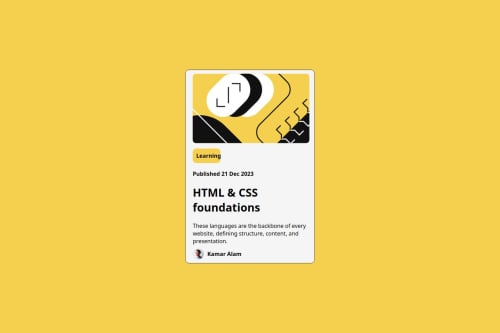
Please log in to post a comment
Log in with GitHubCommunity feedback
- @shwerts
Hi, your solution looks well! Here are how you can improve your solution:
-
Avoid using fixed
heightfor container, usemin-heightproperty instead to not let overflow happen. -
Box shadow's property is this:
x y blur color; where x & y are element coords offsets, and blur is self-explanatory, every value except for color must have<length>units (for example:rem,pxorch). -
Replace some
divs with semantic elements as<main>for container,<article>for card,<p>for para element. Also, wrap date time (not includingpublished:) in a<time>tag with mandatorydatetimeattribute (don't forget to write value for this attribute like this:"YYYY-MM-DD").
-
- @sigma-cmxi
paddings
Join our Discord community
Join thousands of Frontend Mentor community members taking the challenges, sharing resources, helping each other, and chatting about all things front-end!
Join our Discord